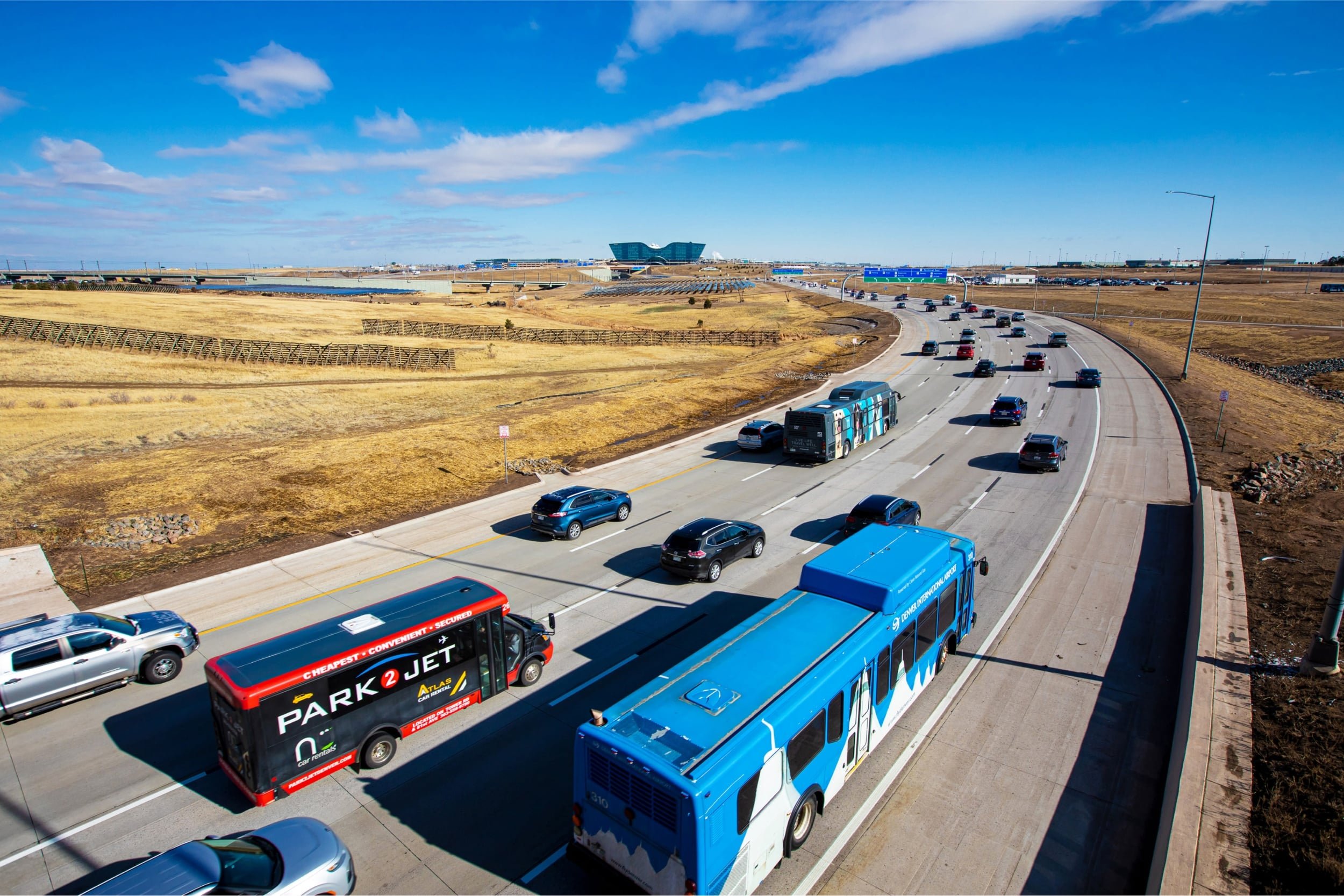Build for Tomorrow, Today: Why Waiting Costs More in the Long Run
For those of you who have flown into Denver International Airport, you know that it feels like it is closer to the Kansas border than downtown Denver. When it was completed in 1995, it was literally in the middle of nowhere! 30 years later and the development around the area has boomed. Housing, retail, entertainment, hotels and corporate headquarters have all popped up changing the nearby landscape. What hasn’t changed though is Peña Blvd, the road that connects the airport to I-70. The original 11 mile long freeway remains two lanes in each direction. And regardless of the time of day, it always feels like it is congested with traffic.
There was considerable foresight in building the airport where it currently stands. At over 50 square miles, it is the largest amount of land occupied by a commercial airport in North America and second largest in the world, providing ample opportunities for expansion. Traffic at DEN has skyrocketed going from 30 million passengers a year shortly after it opened, to 85 million in 2024 and it is now the 6th busiest airport in the world. The airport has continued to bolster its infrastructure and is planning and preparing for 100 million passengers a year by 2027. Here are three pitfalls of reactive leadership:
1) The road to regret.
It’s hard to prepare for the future. When so much of our lives are driven by the urgent, we tend to put off things that will make life easier in the long run. Yet the people and companies that are disciplined enough to make an investment before they immediately need it, end up putting themselves in position to save money, scale growth, and navigate change. Think about the person who puts off preventative maintenance on their car and then ends up broken down on the side of the road. Or the business that fails to upgrade their software system because it might be too disruptive and expensive, but in turn loses it’s ability to integrate with other platforms and results in a poorer guest experience over time (even though the software still works). Or that manager that says “it’s faster to just do it myself” instead of training a team member on how to do a task.
2) Acting before you have to.
Great leaders don’t let urgent tasks get in the way of doing work that will greatly impact their future potential. They focus on things like learning something new, training a team member, exercising, reorganizing, improving processes, and scheduling preventative maintenance. They think about how to “MIBE” and position themselves and their companies in a better place for tomorrow.
3) The price of procrastination.
They are finally getting around to addressing Peña Blvd. Recently City Council approved a $15 million study to figure out the best solution to alleviate congestion. By the time they figure it out and actually do something, I worry that it will be out of date and need to be improved again.
This week, think about what you’ve been putting off. What can you invest your time and energy in today that might not provide an immediate result, but long term will pay off?
Keep MIBE-ing!
Anthony Lambatos
Founder, MIBE
Hospitality Culture Training
Owner, Footers Catering
P.S. Want to be proactive in your leadership journey? Join us at our MIBE Heart Leadership Workshop in August.



